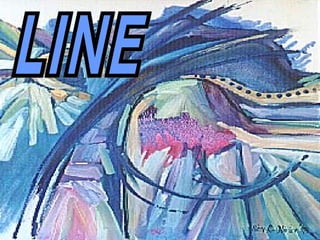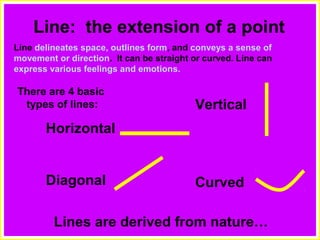The document discusses the four basic types of lines used in design: horizontal, vertical, diagonal, and curved. It provides examples and descriptions of each line type, including how they are derived from nature and the feelings and visual effects they can convey. For example, horizontal lines suggest stability while diagonal lines imply movement. The document also covers combinations of line types and provides exercises for students to identify line elements in objects and decorating materials.


















